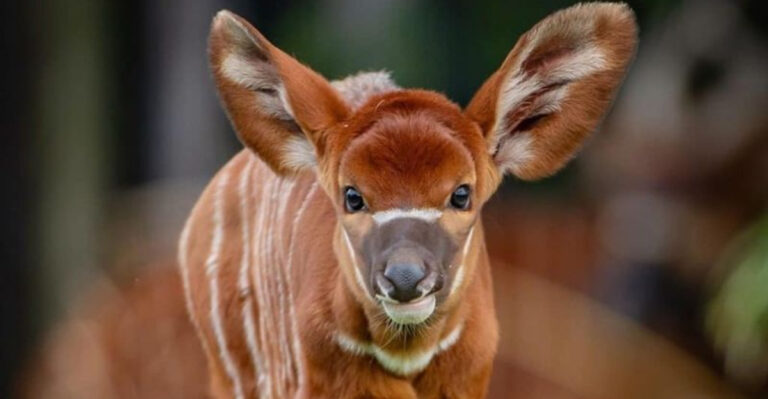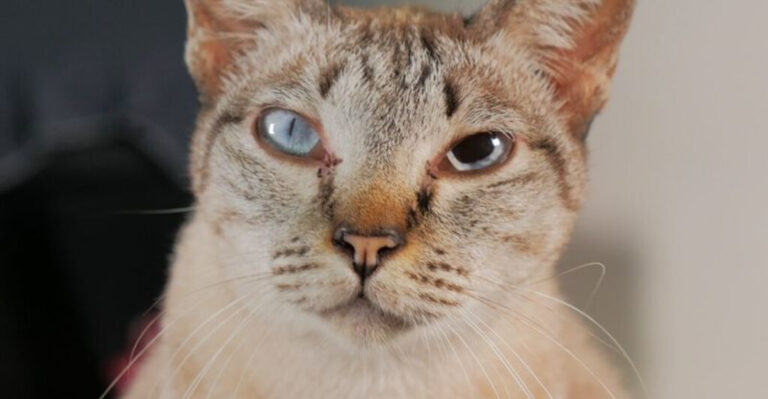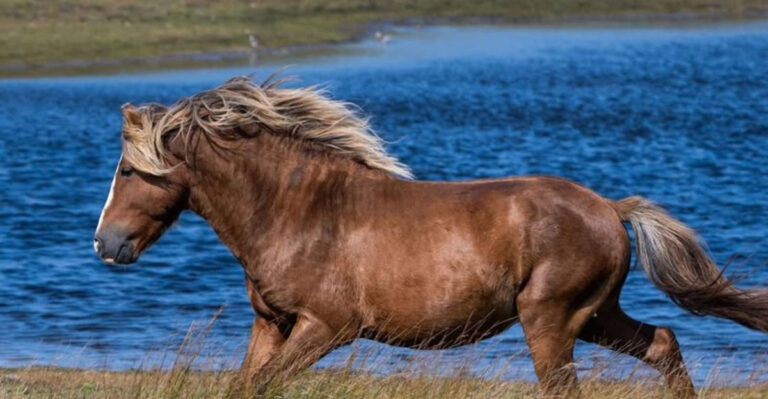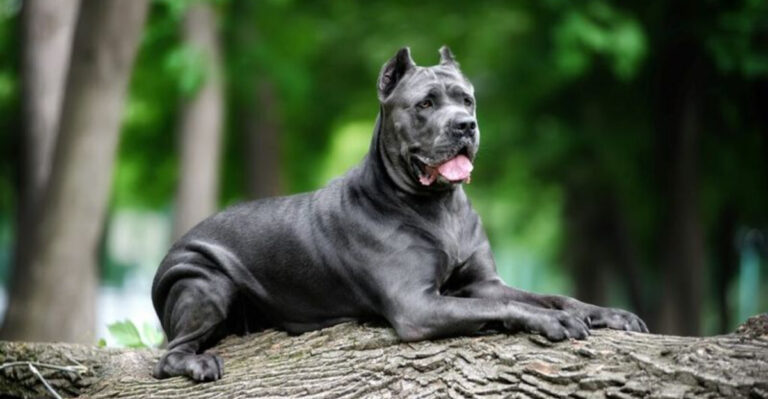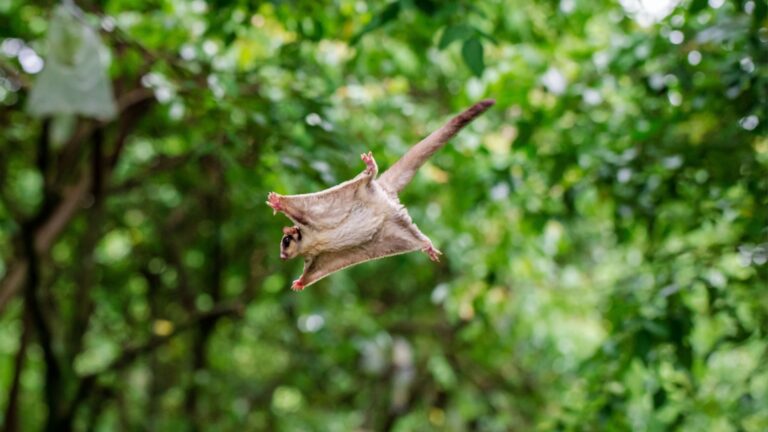15 Birds That Dazzle With The Most Spectacular Feathers On Earth

Birds are nature’s living jewels, adorning our skies with their remarkable plumage. From iridescent hummingbirds to the dramatic displays of peacocks, feathers serve as both functional tools and dazzling ornaments.
The most spectacular feathered creatures on our planet combine brilliant colors, intricate patterns, and unusual shapes that have fascinated humans for centuries.
1. Rainbow-Colored Showstoppers: Mandarin Ducks

Imagine a bird painted by an artist who couldn’t decide on just one color! These Asian waterfowl sport a mind-boggling palette that seems almost unreal.
Males flaunt orange sail-like feathers, purple crests, and metallic blue-green wing patches during mating season. Ancient Chinese considered them symbols of fidelity since they typically mate for life.
2. Nature’s Crown Jewel: Resplendent Quetzal
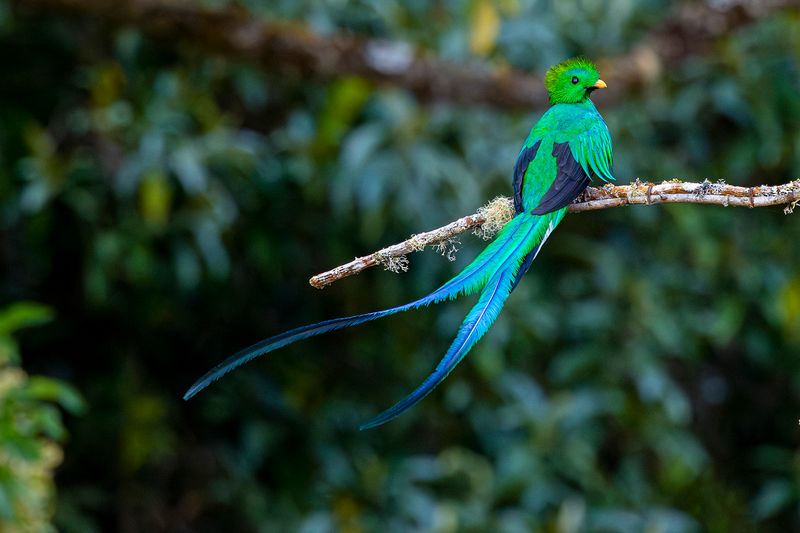
Ancient Mayans worshipped this living treasure, believing its feathers contained magical powers. No wonder – the male’s twin tail feathers can grow up to three feet long!
Emerald-green body feathers shimmer with a metallic glow against a crimson breast. Considered sacred throughout Central America, these birds were never killed – only their naturally molted feathers were collected.
3. Feathered Fireworks: Wilson’s Bird Of Paradise
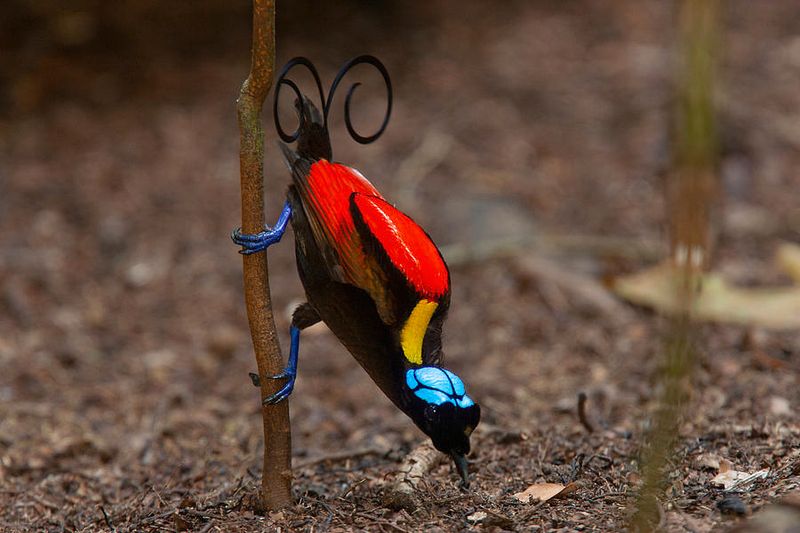
Talk about a head-turner! This rare Indonesian marvel sports a curly tail, blue skull cap, and yellow neck feathers that look like they’re lit from within.
The most extraordinary feature? A bare patch of iridescent green skin on its forehead that reflects light like polished metal. Males clear forest floor “dance floors” to perform elaborate courtship displays.
4. Living Gemstones: Hummingbirds
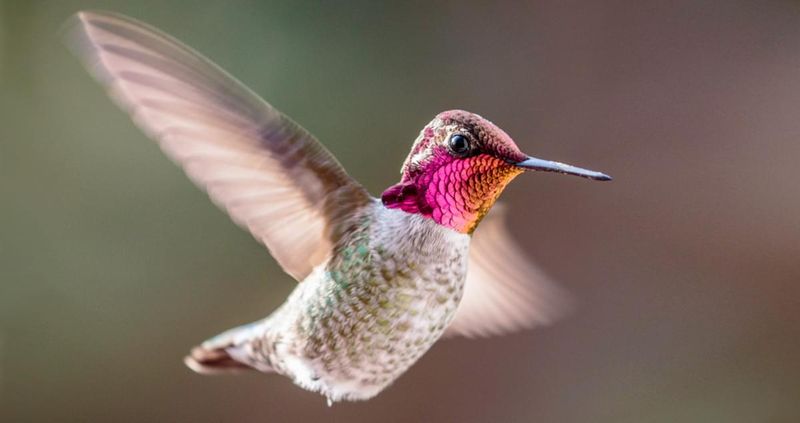
Tiny dynamos with built-in jewelry! Their throat feathers (called gorgets) contain microscopic platelets that split light like prisms, creating colors that shift with viewing angle.
The Anna’s Hummingbird’s gorget appears magenta from one angle and fiery red from another. These special feathers aren’t actually pigmented – the colors come from light-bending structures smaller than a wavelength of light!
5. The Feathered Masterpiece: Indian Peafowl
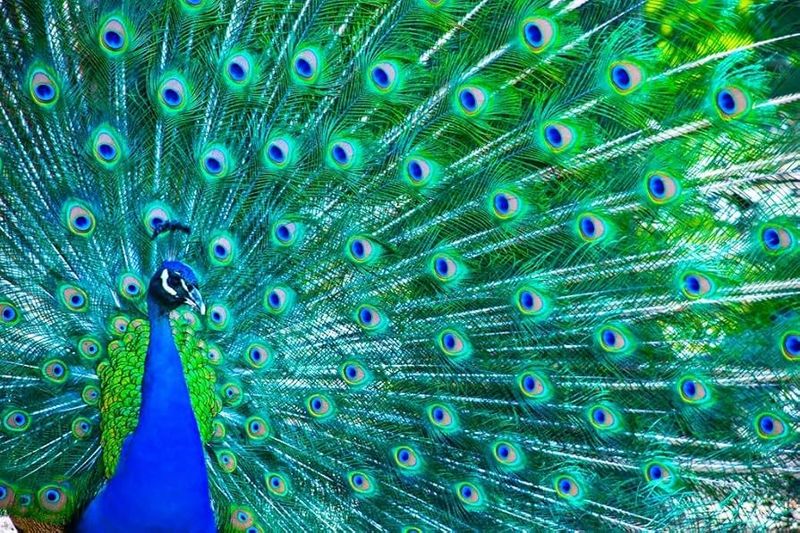
Everyone knows those eye-spotted train feathers, but did you know each “eye” contains specialized barbules that reflect blue, green, and copper in different light?
A male’s train can contain over 200 specialized feathers measuring up to 5 feet long. When displaying, peacocks can vibrate these feathers at specific frequencies that hypnotize peahens – literally mesmerizing potential mates!
6. Sunset-Hued Wonders: Scarlet Ibis
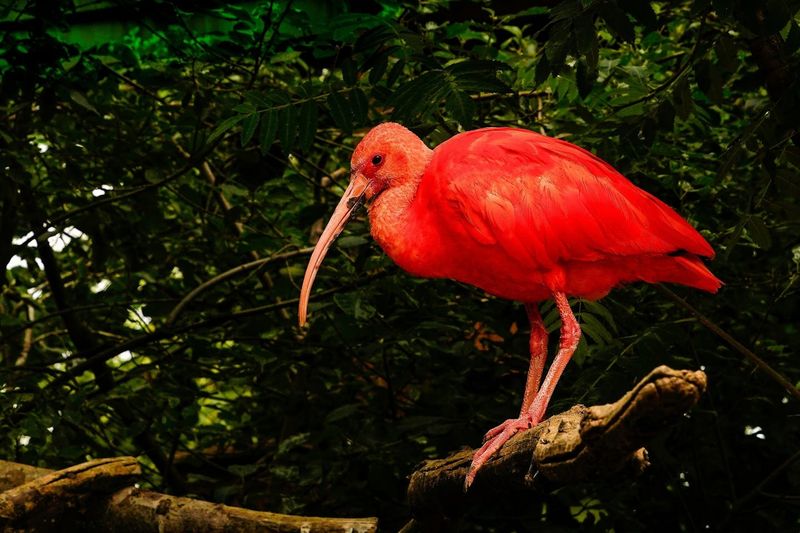
Flocks of these birds look like flying flames against tropical skies! Their extraordinary color comes from their diet – they consume red crustaceans rich in carotenoid pigments.
Baby ibises hatch with pale feathers that gradually turn vibrant scarlet as they mature and consume more pigment-rich foods. Without these special foods in their diet, captive birds can actually fade to pale pink!
7. The Glittering Sun God: Golden Pheasant
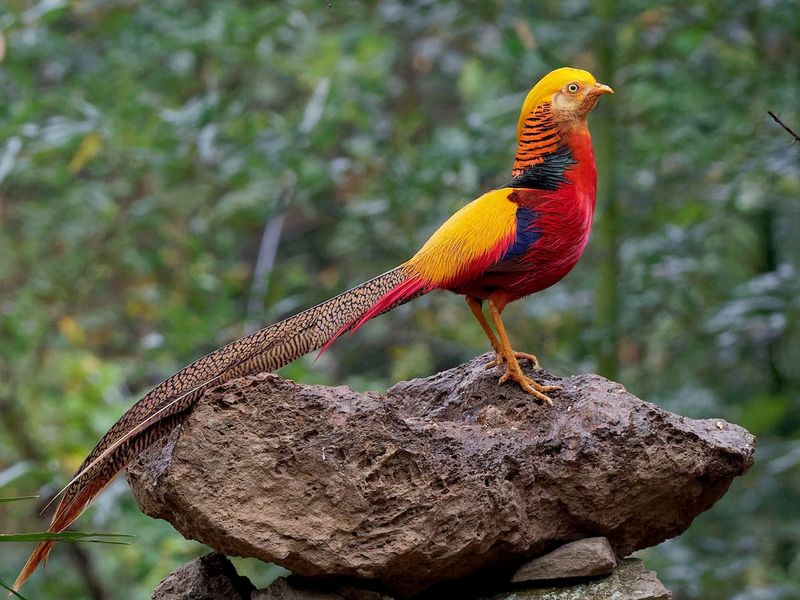
Straight from a fantasy novel, these Chinese natives sport a golden-yellow crest that fans forward like a punk rocker’s mohawk!
Males combine a fiery orange “cape” of squared-off feathers with a crimson body and metallic blue wing panels. Ancient Chinese nobility kept them as living garden ornaments, believing their presence brought good fortune and prosperity to the household.
8. Floating Snowflakes: Great Egrets

During breeding season, these elegant birds grow delicate plumes called aigrettes that were once worth more than gold by weight!
The wispy, lace-like feathers grow from the bird’s back and curl gracefully over its tail. In the late 1800s, these birds were hunted to near-extinction for hat decorations until pioneering conservationists helped pass the first wildlife protection laws.
9. The Neon Party Bird: Lilac-Breasted Roller
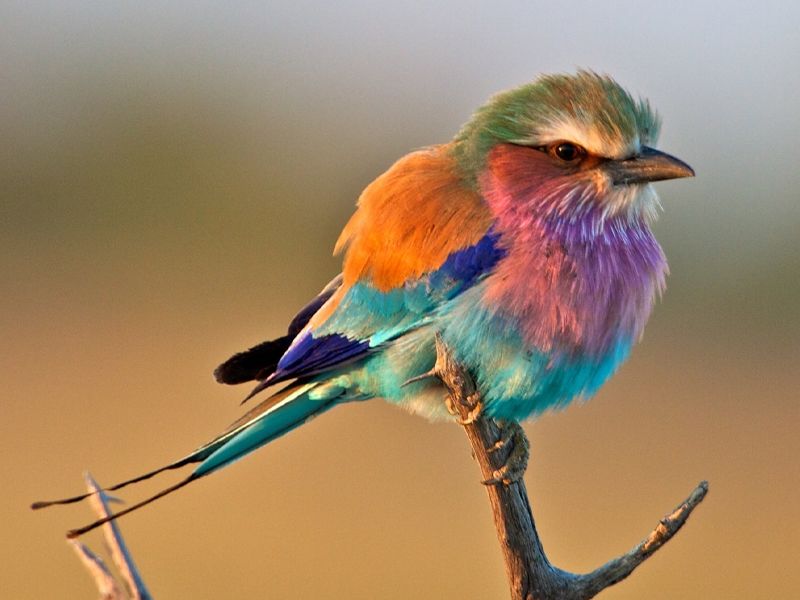
Looking like it flew straight out of a color explosion, this African beauty combines turquoise, lilac, olive, and rufous feathers in one compact package!
The name “roller” comes from its acrobatic courtship flight – males perform barrel rolls and somersaults to impress females. Their feathers contain specialized pigments that resist fading even under the harsh African sun.
10. Feathered Architect: Male Bower Bird

These avian interior decorators build elaborate structures adorned with collected treasures, but their own plumage is equally impressive!
The Satin Bowerbird’s midnight-blue feathers have a special molecular structure that absorbs almost all wavelengths of light. This creates a deep, velvety appearance unlike any other bird. They meticulously arrange blue objects that complement their feathers around their courtship bowers.
11. The Painted Warrior: Lady Amherst’s Pheasant
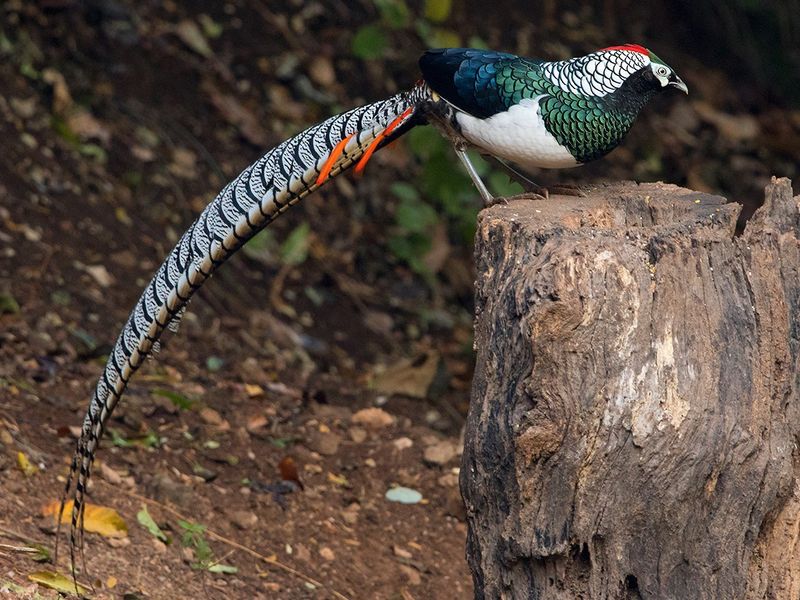
Sporting a helmet-like black and white crest and cape of metallic feathers, this bird looks ready for battle in ceremonial armor!
The male’s white, green, blue, and crimson plumage creates striking contrasts against its long, zebra-striped tail. Named after Countess Sarah Amherst, who sent the first specimen to London in 1828, these birds were once considered so exotic that few believed they were real.
12. The Living Rainbow: Gouldian Finch
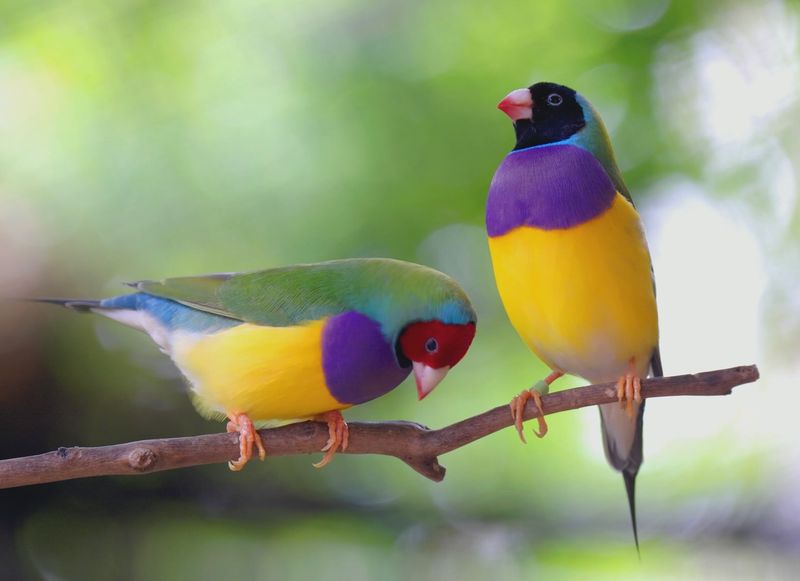
Nicknamed the “rainbow finch,” these tiny Australian birds come with interchangeable head colors – red, black, or yellow – like collectible toys!
Their bodies blend violet, turquoise, yellow, and green in precise patterns. Sadly, these natural jewels have declined by 90% in the wild due to habitat loss, making their spectacular colors increasingly rare outside of aviculture.
13. The Feathered Disco Ball: Superb Bird Of Paradise

Famous for its bizarre courtship dance, this New Guinea native transforms into a smiling face when displaying!
Males raise an oval-shaped cape of velvety black feathers highlighted by electric blue patches that seem to glow from within. When viewed with specialized equipment, these blue feathers absorb 99.95% of direct light, creating one of the deepest blacks in nature as a dramatic backdrop.
14. The Jeweled Emperor: Ruby-Throated Hummingbird

Faster than the eye can follow, these tiny birds flash throat feathers that outshine precious gems!
Their specialized gorget feathers contain layers of air bubbles and melanin that create structural color through light interference. This means the brilliant ruby color isn’t from pigment at all – it’s created the same way soap bubbles make rainbow colors.
15. The Avian Royalty: Victoria Crowned Pigeon
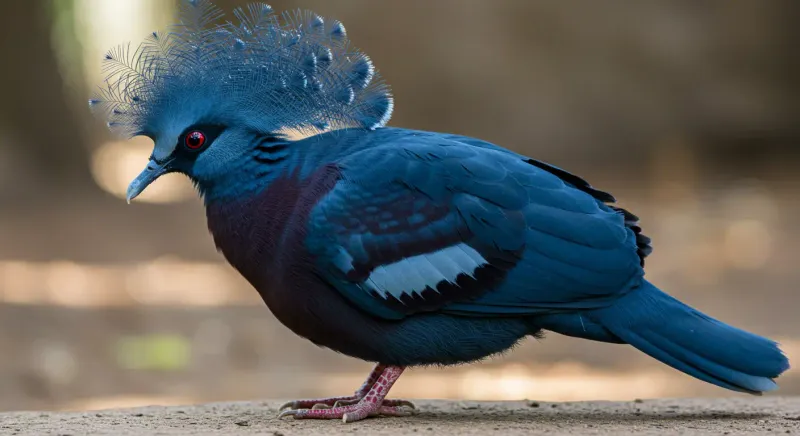
Forget everything you know about ordinary pigeons! This blue giant wears an elaborate lace fan of feathers that would make any monarch jealous.
Standing nearly as tall as a peacock, their head crest contains delicate feathers with white tips that create a lacework pattern. Named after Queen Victoria, these birds walk with regal posture, their feather crowns bobbing with each step.

